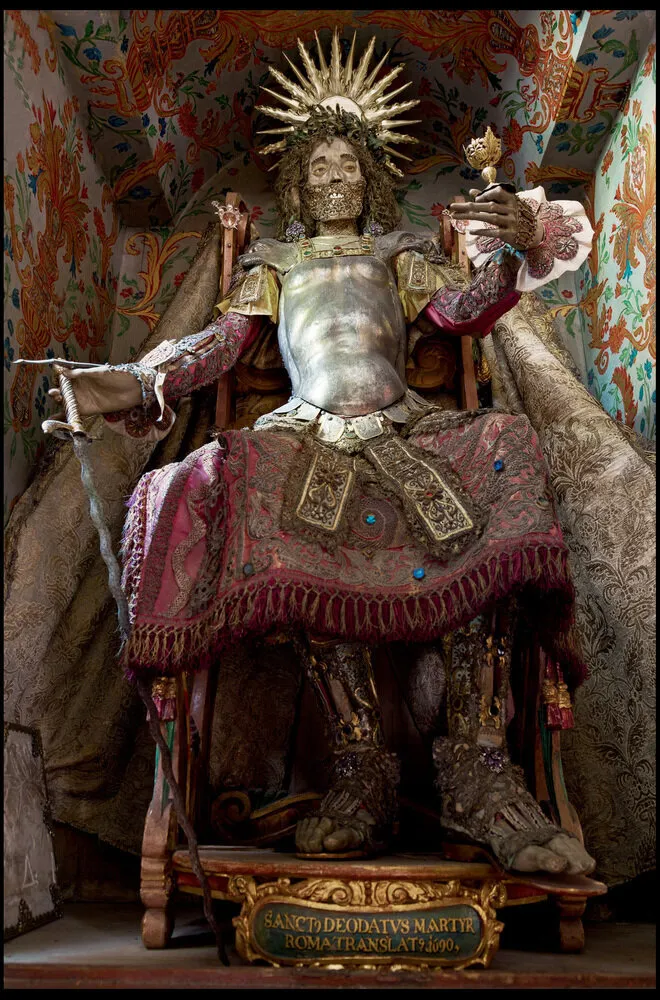The mysterious lives of catacomb saints conjure images of ancient relics, hidden chambers, and macabre rituals shrouded in myth and legend. These enigmatic figures, often adorned in elaborate vestments and encrusted with jewels, have captured the imagination of historians, theologians, and curiosity-seekers alike for centuries. From the depths of the Roman catacombs to the altars of European cathedrals, catacomb saints occupy a unique and haunting place in the annals of religious devotion and cultural fascination.


Catacomb saints, also known as incorruptibles or mummies of the saints, are the preserved remains of Christian martyrs and saints from the early centuries of Christianity. These sacred relics gained prominence during the Middle Ages and Renaissance, when they were venerated as objects of devotion and sources of miraculous healing. The cult of the catacomb saints flourished particularly in Europe, where their relics became prized possessions of churches, monasteries, and pilgrimage sites.
The origins of the catacomb saints can be traced back to the catacombs of Rome, a vast network of underground burial chambers and passageways used by early Christians for interring their dead. Beginning in the 3rd century AD, as Christianity spread throughout the Roman Empire, these catacombs became sanctuaries for the persecuted faithful, serving as places of worship, refuge, and burial for generations of Christians. Over time, the catacombs became repositories of sacred relics, including the bones and remains of martyrs and saints who had suffered persecution and death for their faith.
The process of creating catacomb saints typically involved the exhumation of the remains of early Christian martyrs and saints from the catacombs, followed by the cleaning, preservation, and adornment of their bodies. In some cases, the bodies were found to be miraculously preserved, exhibiting little or no signs of decay despite centuries of burial underground. These naturally preserved bodies were often interpreted as evidence of the saint’s holiness and divine favor, leading to their veneration as relics of special significance.
To enhance the appeal and aura of sanctity surrounding the catacomb saints, their bodies were often dressed in richly embroidered garments, adorned with jewels, and displayed in ornate reliquaries or shrines. These elaborate presentations served to elevate the status of the saints and attract pilgrims and devotees seeking solace, healing, and spiritual blessings. The cult of the catacomb saints reached its zenith during the medieval period, when relics were believed to possess miraculous powers and were venerated as conduits of divine grace.

One of the most famous catacomb saints is St. Cecilia, a Roman martyr whose relics are enshrined in the church of Santa Cecilia in Trastevere, Rome. According to tradition, St. Cecilia was a noblewoman who converted to Christianity and was martyred for her faith in the 3rd century AD. Her body was discovered in the catacombs of Rome in the 9th century, miraculously preserved and incorrupt. St. Cecilia became one of the most venerated saints of the Middle Ages, revered for her purity, piety, and martyrdom. Her relics were believed to possess healing powers, and pilgrims flocked to her shrine seeking miracles and blessings.
Another renowned catacomb saint is St. Valentinus, whose relics are venerated in the Basilica of San Valentino in Terni, Italy. According to legend, St. Valentinus was a Roman priest who defied the emperor’s orders by performing Christian marriages in secret. He was martyred for his faith in the 3rd century AD and buried in the catacombs of Rome. Like St. Cecilia, St. Valentinus became a popular saint during the Middle Ages, revered as the patron saint of love, marriage, and affianced couples. His relics were believed to have the power to grant fertility and protect against epilepsy and other ailments.
Despite their enduring popularity and veneration, the cult of the catacomb saints has not been without controversy and skepticism. In recent centuries, scientific analysis and skepticism have cast doubt on the miraculous claims surrounding these relics, leading some to question their authenticity and legitimacy. Skeptics argue that many of the so-called catacomb saints were not actually martyrs or saints but rather ordinary individuals whose bodies were mistakenly attributed to legendary figures or embellished with miraculous tales.
Furthermore, advances in forensic science and archaeology have shed light on the natural processes of decomposition and preservation that can occur in certain burial environments, particularly in dry or anaerobic conditions such as those found in catacombs. While the preservation of some catacomb saints may indeed be extraordinary, it is not necessarily miraculous or supernatural in nature. Instead, it may be the result of environmental factors, burial practices, or embalming techniques employed by ancient cultures.
In addition to scientific skepticism, the cult of the catacomb saints has also been criticized for its commercialization and exploitation by unscrupulous individuals seeking to profit from the veneration of relics. During the Middle Ages, the trade in relics and pilgrimage souvenirs became a lucrative enterprise, with merchants and church officials often engaging in dubious practices to attract pilgrims and donors. Relics were bought, sold, and traded like commodities, leading to abuses and controversies within the church.
Despite these controversies and challenges, the cult of the catacomb saints continues to endure in the modern era, albeit with a more critical and nuanced understanding of their historical and cultural significance. Today, the relics of the catacomb saints remain objects of fascination and pilgrimage for devout Catholics and curious tourists alike, drawing visitors to churches, museums, and catacombs across Europe and beyond.
